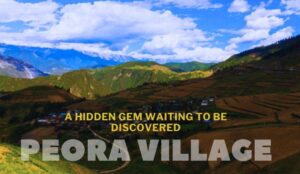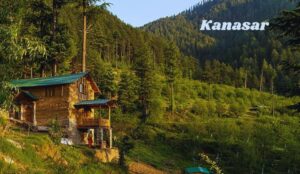It is amidst the rugged terrain of Himachal Pradesh’s Spiti Valley that Dhankar Monastery stands as a beacon of ancient spirituality, architectural ingenuity, and cultural heritage. Perched precariously on a cliff overlooking the confluence of the Spiti and Pin Rivers, this monastery is a testament to the enduring power of faith and human resilience. With its stunning location, profound history, and serene ambiance, Dhankar Monastery offers a unique experience for travelers, history enthusiasts, and spiritual seekers alike.
The History of Dhankar Monastery
Dhankar Monastery, also known as Dhangkar Gompa, is believed to date back over a thousand years. This ancient Buddhist monastery was once the capital of the Spiti Valley kingdom, serving as a seat of governance and spirituality for the region’s rulers.
Origins and Name
The name “Dhankar” is derived from two words:
- ‘Dhang,’ meaning cliff
- ‘Kar’ meaning fort
This aptly describes its location as a fortress-like structure perched on a cliff. Historically, it served dual purposes: as a religious institution and a defensive fort to protect the valley from invasions.
Role in Tibetan Buddhism
The monastery is a hub for the Gelugpa sect of Tibetan Buddhism, also known as the “Yellow Hat” sect. Over centuries, Dhankar has been a vital center for the dissemination of Buddhist teachings, meditation practices, and the preservation of scriptures.
Architectural Marvel of Dhankar Monastery
One of the most striking features of Dhankar Monastery is its precarious location. Built at an altitude of approximately 12,774 feet (3,894 meters), the monastery is a masterpiece of ancient Himalayan architecture, blending seamlessly with its surroundings.
Cliffside Construction
The monastery’s position on a 1000-foot-high cliff offers breathtaking panoramic views of the valley below. The structure, constructed using traditional materials like mud and stone, showcases the ingenuity of Tibetan architecture, designed to withstand harsh weather conditions and earthquakes.
Main Temple Complex
The monastery comprises several temples, each with unique features:
- Dukhang (Assembly Hall): This hall serves as the main prayer room where monks gather for chanting and rituals.
- Lhakhang (Temple of the Gods): Housing ancient murals and statues, this temple is a treasure trove of Buddhist art.
- Vairochana Statue: A striking highlight, this massive statue of Buddha depicts him seated in a meditation pose, radiating peace and wisdom.
Threats to Its Structure
Despite its grandeur, Dhankar Monastery faces challenges due to soil erosion, seismic activity, and harsh climatic conditions. Efforts are underway to preserve this architectural gem, including the construction of a New Dhankar Monastery nearby to ensure continuity of monastic life.
Spiritual Significance of Dhankar Monastery
Dhankar Monastery is not just an architectural wonder; it is also a sacred spiritual retreat. The monastery has been a center for Buddhist learning, meditation, and rituals for centuries.
Home to Ancient Texts
The monastery houses several ancient Buddhist scriptures and Thangkas (painted or embroidered Tibetan scrolls), some of which date back to the 12th century.
Meditation and Retreats
The serene environment of Dhankar provides an ideal setting for meditation and introspection. Visitors and monks alike find solace in the tranquility that envelops the monastery.
The Allure of Dhankar Lake
A short trek from the monastery leads to the picturesque Dhankar Lake, also known as Dhankar Tso. At an altitude of approximately 13,600 feet, this pristine lake is surrounded by barren mountains, creating a surreal landscape.
Trekking to Dhankar Lake
The trek to Dhankar Lake is challenging, taking 1-2 hours. The trail offers stunning views of the Spiti Valley, making the journey as rewarding as the destination.
A Photographer’s Paradise
Dhankar Lake is a haven for photographers and nature lovers. Its shimmering waters reflect the blue sky and rugged peaks, creating a mesmerizing tableau.
Cultural and Traditional Insights
Dhankar Monastery is more than a religious site; it is a living repository of Spiti’s culture and traditions. The monastery hosts several festivals and ceremonies that showcase the region’s vibrant heritage.
Festivals at Dhankar Monastery
- Cham Dance: Monks don elaborate costumes and masks, performing ritualistic dances to depict the triumph of good over evil.
- Losar Festival: Celebrating the Tibetan New Year, this festival is marked by prayers, feasts, and traditional music.
Monastic Life
The monks at Dhankar Monastery lead a disciplined life centered around prayer, study, and service. Visitors often describe their interactions with the monks as enlightening and humbling.
Nearby Places to Explore
1. Dhankar Lake
It is Located about 2 kilometers from the monastery, this pristine high-altitude lake is a must-visit. A challenging trek takes you to its shores, where you can enjoy reflections of the surrounding mountains on the lake’s clear waters.
2. Pin Valley National Park
Famous for its snow leopards and other rare wildlife, Pin Valley offers trekking, bird-watching, and a glimpse of untouched Himalayan beauty.
3. Tabo Monastery
Known as the “Ajanta of the Himalayas,” Tabo Monastery is renowned for its ancient caves and exquisite frescoes. It is about 30 kilometers from Dhankar.
4. Key Monastery
A spiritual landmark in Spiti, Key Monastery is the largest and oldest training center for Lamas in the valley. Its hilltop location provides stunning views.
5. Lhalung Monastery
Lhalung Monastery is a lesser-known gem, also called the Golden Temple of Spiti, is one of the earliest monasteries in the region. Its ancient murals and serene surroundings are captivating.
6. Langza Village
Langza Village is known for its iconic Buddha statue and fossil-rich terrain, Langza offers a peek into the region’s geological and cultural history.
7. Kaza
The administrative center of Spiti Valley, Kaza is a bustling town with basic amenities, markets, and accommodations. It serves as a gateway to many Spiti attractions.
Practical Information for Visitors
Best Time to Visit
The ideal time to visit Dhankar Monastery is between May and October when the weather is pleasant and the roads are accessible. Winters are harsh, with heavy snowfall making travel challenging.
How to Reach Dhankar Monastery
- By Road: Dhankar is well-connected to major towns like Kaza (34 km) and Manali (250 km). The roads are scenic but require skilled driving due to rugged terrain.
- By Air: The nearest airport is Bhuntar Airport, about 250 km away.
- By Train: The nearest railway station is in Shimla, approximately 400 km away.
Accommodation
- Monastic Guesthouses: Simple yet cozy accommodations within the monastery premises.
- Nearby Homestays: Local homestays in Dhankar village offer an immersive cultural experience.
- Hotels in Kaza: For more comfortable stays, Kaza provides better facilities.
Tips for Travelers
- Carry warm clothing, even in summer, as temperatures can drop unexpectedly.
- Stay hydrated to avoid altitude sickness.
- Respect monastic rules and the sanctity of the place.
- Opt for eco-friendly travel practices to preserve the pristine environment.
Conclusion
Dhankar Monastery is a destination that transcends the ordinary, offering an extraordinary blend of history, spirituality, and natural beauty. Whether you are a traveler, a history buff, or a spiritual seeker, visiting Dhankar will surely leave an indelible mark on your soul. Plan your journey to Dhankar Monastery and immerse yourself in the mystical charm of this ancient Himalayan treasure. Let the serenity of its landscapes and the wisdom of its walls guide you on a journey of discovery and enlightenment.
Frequently Asked Questions
1. What is the significance of Dhankar Monastery?
Dhankar Monastery is a historic and spiritual center in Spiti Valley, serving as a key hub for Tibetan Buddhism. It is known for its ancient architecture, cultural heritage, and religious importance.
2. Is Dhankar Monastery safe to visit?
Yes, Dhankar Monastery is safe to visit. However, travelers should exercise caution on the narrow mountain roads and acclimatize to the high altitude.
3. How difficult is the trek to Dhankar Lake?
The trek to Dhankar Lake is moderately challenging, with steep ascents and rocky terrain. It takes about 1–2 hours one way, depending on your fitness level.
4. Are accommodations available near Dhankar Monastery?
Yes, there are basic guesthouses and homestays in Dhankar village. For more options, travelers can stay in Kaza or Tabo.
5. Can I visit Dhankar Monastery in winter?
While it is possible to visit during winter, heavy snowfall often makes roads inaccessible. It is advisable to check local conditions and plan accordingly.
6. What is the best time to visit Dhankar Monastery?
The best time is from May to September when the weather is pleasant, and roads are open.





